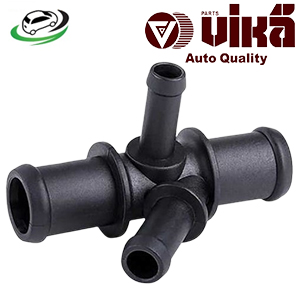-31%
Get Timing Belt 1.4 16V (58 Teeth) Volkswagen Lupo 1.4 GTI 036109119P
The timing belt is a crucial component in an engine’s timing system. It synchronizes the rotation of the crankshaft and camshaft(s) to ensure that the engine’s valves open and close at the proper times during each cylinder’s intake and exhaust strokes. Proper function of the timing belt is essential for optimal engine performance, fuel efficiency, and longevity. This guide provides an in-depth look at the timing belt’s design, function, types, benefits, maintenance, and replacement.
Design and Function
Design:
A timing belt typically consists of several key elements:
- Belt Material: Timing belts are commonly made from reinforced rubber or synthetic materials, designed to withstand high stress and temperature conditions. They often include a fabric or steel cord reinforcement to enhance strength and durability.
- Teeth or Cogs: The belt features teeth or cogs along its inner surface, which mesh with corresponding gears on the camshaft and crankshaft. These teeth ensure precise synchronization between the two shafts.
- Belt Length: The length of the timing belt is precisely engineered to fit the specific engine design, ensuring correct timing between the camshaft and crankshaft.
- Tensioners and Idlers: Components that maintain proper tension on the timing belt and guide it along its path. These are critical for preventing belt slippage and ensuring accurate timing.
Function:
The primary functions of a timing belt are:
- Synchronization: Ensures that the camshaft and crankshaft rotate in sync, allowing the engine’s valves to open and close at the correct times. This synchronization is crucial for efficient engine operation and performance.
- Timing Control: Regulates the timing of the engine’s valve movements, which affects the engine’s power output, fuel efficiency, and emissions.
- Preventing Engine Damage: Prevents potential engine damage caused by improper valve timing, which can lead to severe engine issues or failure.
Types of Timing Belts
1. Standard Timing Belts:
- Description: The most common type, featuring standard rubber or synthetic material with a series of teeth along the inner surface.
- Advantages: Reliable and cost-effective for standard engine applications.
2. High-Performance Timing Belts:
- Description: Designed for high-performance or racing engines, made from advanced materials like Kevlar or reinforced composites for increased durability and strength.
- Advantages: Enhanced resistance to high temperatures and stress, suitable for high-torque engines.
3. Silent Timing Belts:
- Description: Feature a noise-reducing design to minimize operational noise. Often used in luxury or high-end vehicles.
- Advantages: Quieter operation compared to standard timing belts, contributing to a more refined driving experience.
4. Variable Valve Timing (VVT) Belts:
- Description: Used in engines with variable valve timing systems to accommodate changes in valve timing for improved performance and fuel efficiency.
- Advantages: Allows for adjustment of valve timing based on engine conditions, optimizing performance and efficiency.
Benefits
1. Engine Synchronization:
- Precise Timing: Ensures that the camshaft and crankshaft rotate in perfect sync, allowing for optimal valve timing and engine performance.
- Efficient Operation: Contributes to smooth engine operation and power delivery.
2. Improved Performance:
- Power Output: Accurate timing helps maintain optimal power output and acceleration.
- Fuel Efficiency: Proper valve timing contributes to better fuel combustion and efficiency.
3. Reduced Emissions:
- Cleaner Exhaust: Ensures proper valve timing, which helps in achieving cleaner combustion and reduced exhaust emissions.
4. Engine Protection:
- Prevents Damage: Helps prevent engine damage caused by misaligned valves, which can lead to severe mechanical failure.
Maintenance and Troubleshooting
1. Regular Inspection:
- Check for Wear: Inspect the timing belt for signs of wear, such as cracks, fraying, or glazing. Most manufacturers recommend checking the timing belt every 60,000 to 100,000 miles, depending on the vehicle and driving conditions.
- Tension Check: Ensure that the timing belt tension is properly adjusted. An overly loose or tight belt can cause timing issues or premature wear.
2. Listen for Noise:
- Belt Noise: Listen for any unusual noises from the timing belt area, such as squealing or chirping. These noises can indicate problems with the belt or associated components.
3. Replacement:
- Signs of Failure: Replace the timing belt if you notice signs of damage, such as visible cracks, missing teeth, or if the belt has reached the manufacturer’s recommended mileage interval.
- Replacement Procedure: Replacing a timing belt typically involves removing various engine components to access the belt. It is essential to follow the manufacturer’s instructions for proper replacement and alignment. Often, it is recommended to replace the tensioners and idlers along with the timing belt.
4. Check Timing Marks:
- Proper Alignment: Ensure that the camshaft and crankshaft timing marks align correctly after installing a new timing belt. Incorrect alignment can lead to engine performance issues or damage.
Seasonal Considerations
1. Extreme Temperatures:
- Cold Weather: In colder climates, check the timing belt for signs of cracking or brittleness due to low temperatures. Ensure the belt remains flexible and in good condition.
- Hot Weather: In hot climates, inspect the belt for signs of overheating or deterioration due to high temperatures. Ensure proper cooling system maintenance to prevent overheating.
2. Regular Maintenance:
- Pre-Trip Inspection: Before long trips or seasonal changes, inspect the timing belt to ensure it is in good condition and ready for the demands of varying driving conditions.
Follow us on Facebook for more parts.





